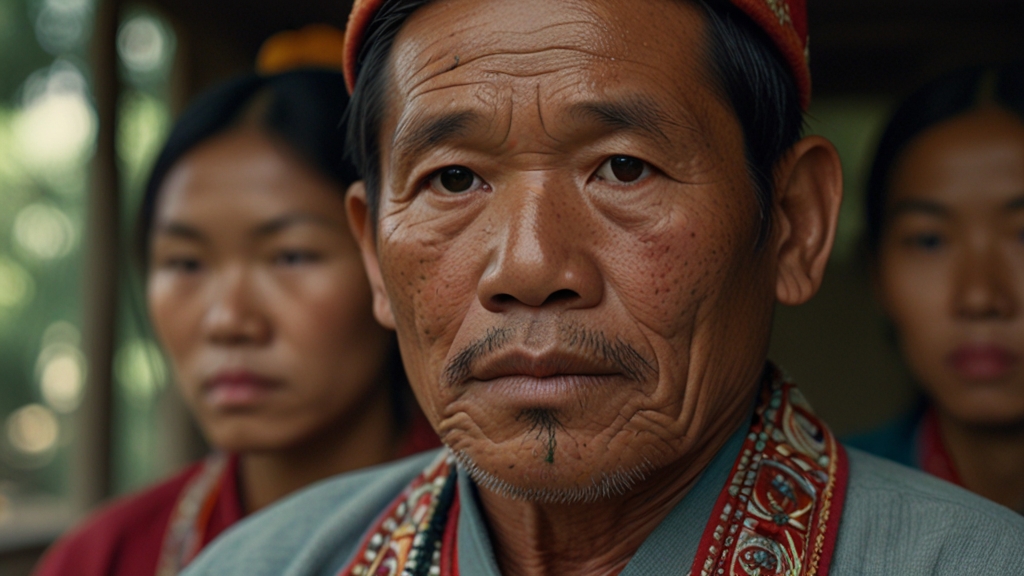Introduction
The Hakha Chin language, also known as Laiholh, is a fascinating and rich language spoken primarily in the Chin State of Myanmar and the neighboring regions of India and Bangladesh. With its unique linguistic features and deep cultural roots, Hakha Chin offers a captivating glimpse into the lives and traditions of the Chin people. In this blog, we’ll explore some of the most interesting facts about the Hakha Chin language.
1. Part of the Tibeto-Burman Language Family
Hakha Chin belongs to the Tibeto-Burman branch of the Sino-Tibetan language family, which includes languages like Burmese, Tibetan, and Mandarin. This connection places Hakha Chin within a diverse and extensive family of languages that span a significant portion of Asia.
2. Distinctive Tonal Language
One of the unique aspects of Hakha Chin is its tonal nature. It uses tones to distinguish meaning between words that otherwise have the same phonetic structure. For instance, a change in pitch can completely alter the meaning of a word, making the language melodically intricate and beautiful.
3. Syllable Structure and Phonetics
Hakha Chin primarily uses a syllable structure of Consonant-Vowel (CV) or Consonant-Vowel-Consonant (CVC). This structure is relatively simple compared to many other languages, but it is complemented by a rich inventory of sounds, including some that are quite rare in other languages.
4. Influence of Christian Missionaries
Christian missionaries have had a significant impact on the development and standardization of the Hakha Chin language. In the late 19th and early 20th centuries, missionaries devised a writing system for Hakha Chin using the Latin alphabet. This effort not only helped in the spread of Christianity but also contributed to literacy and education among the Chin people.
5. A Language of Oral Tradition
Before the introduction of a writing system, Hakha Chin was primarily an oral language. Folktales, songs, and oral histories were the main methods of preserving and transmitting cultural knowledge. This oral tradition remains strong, and many stories and customs continue to be passed down verbally through generations.
6. Rich Vocabulary Reflecting Culture and Environment
The vocabulary of Hakha Chin is deeply reflective of the Chin people’s environment and way of life. Words and expressions often relate to nature, agriculture, and social structures. For example, there are numerous terms for different kinds of rice, reflecting its importance in their diet and culture.
7. Dialects and Variations
Hakha Chin is not a monolithic language; it has several dialects, which can vary significantly from one region to another. This diversity within the language reflects the varied geography and history of the Chin State. Despite these differences, mutual intelligibility is generally maintained, fostering a strong sense of community and identity among its speakers.
8. Modern Developments and Challenges
In recent years, there has been a growing movement to preserve and promote the Hakha Chin language amidst the pressures of globalization and the dominance of more widely spoken languages like Burmese and English. Efforts include the production of educational materials, literature, and digital content in Hakha Chin, as well as the incorporation of the language into formal education.
9. Cultural Revival Through Language
Language is a key part of cultural identity, and for the Chin people, maintaining their language is integral to preserving their cultural heritage. Festivals, traditional songs, and community events often feature the Hakha Chin language, serving as a powerful tool for cultural revival and cohesion.
Conclusion
The Hakha Chin language is a vibrant testament to the resilience and cultural richness of the Chin people. Its unique features, deep historical roots, and ongoing efforts for preservation make it a fascinating subject of study and a vital part of the world’s linguistic diversity. As we continue to explore and appreciate languages like Hakha Chin, we gain a deeper understanding of the intricate tapestry of human culture and communication.
